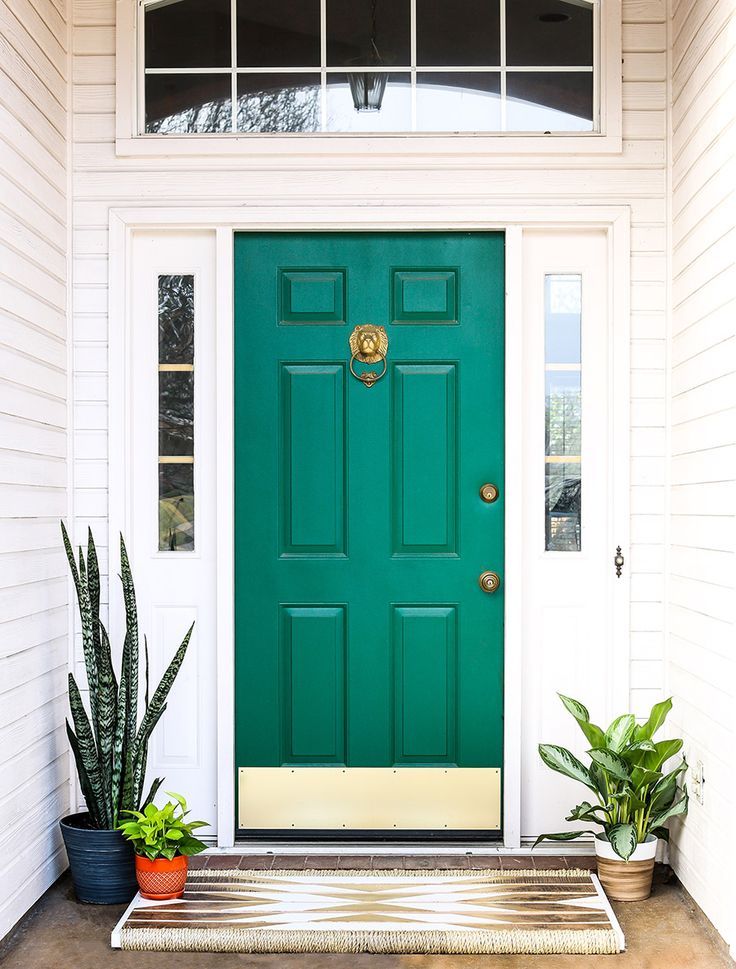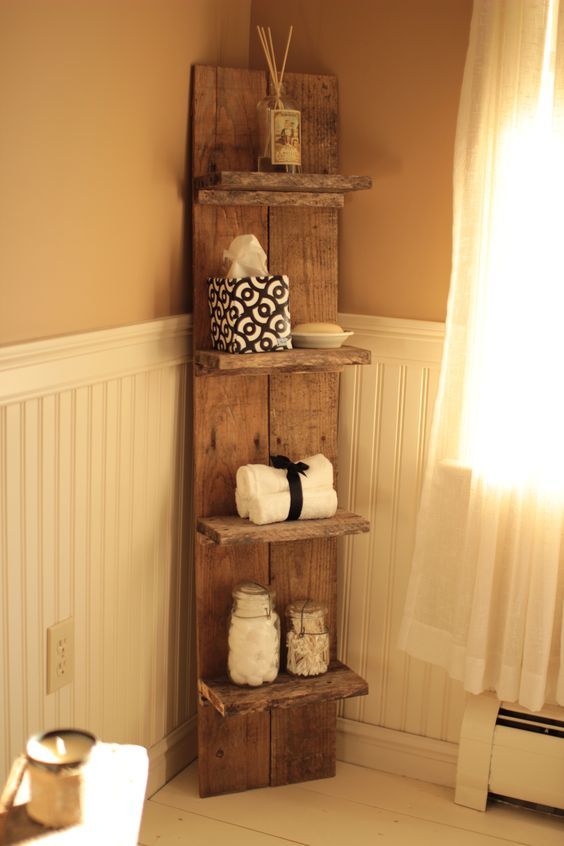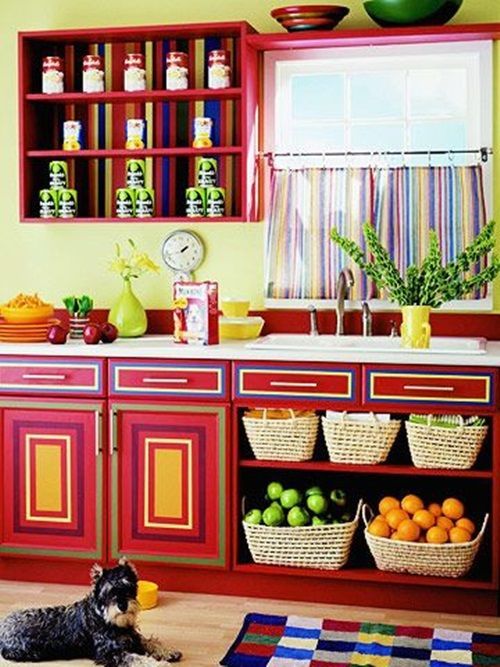Household plants clean air
10 Indoor Plants That Clean the Air
Did you know that houseplants help purify the air in our homes? We’ve long known that indoor plants improve our mood and reduce stress levels, but improving air quality is an additional benefit! See the best air-purifying houseplants.
During the colder months, we spent a lot of time indoors. Certainly, healthy indoor air is a top priority. Without proper ventilation, it doesn’t take long for indoor pollutants to build up to unhealthy levels.
Indoor pollutants come in two major varieties:
- Particulates such as dust, mold spores, and pollen.
- Volatile organic compounds (VOCs). VOCs are gases that are released from paints, fabrics, wallpaper, carpeting, plastics, and solvents commonly found in most homes. Even household chemicals such as bleach, ammonia, detergents, furniture polish, carpet cleaners, and moth balls give off harmful gases.
Mechanical or electrostatic filters can be effective in trapping particulates, but unless we remove the source, airborne chemicals are difficult to eliminate entirely.
What do plants have to do with indoor air?
Let’s review a basic bit of botany: plants absorb carbon dioxide (Co2) and release oxygen (O2), which is used by all humans and living beings to breathe. Outdoors, tree planting makes use of that concept to atone for the effects of air pollution. So, would indoor plants do the same with indoor air?
Back in 1989, a NASA Clean Air Study tested 19 different species of plants to see if they would be effective at cleaning the air. They found that in just 24 hours, up to 87% of the formaldehyde, benzene, and trichloroethylene was removed from the air by the leaves and roots of the plants, while oxygen was returned to the room. Bottom-line: common, low-light houseplants absorbed toxins and helped purify the air!
…Or so we thought. A 2019 study by the Journal of Exposure Science & Environmental Epidemiology concluded that the effect of indoor plants on indoor VOC levels has been a bit overblown. While they do purify the air, they do so at such a slow rate that it doesn’t make much of an impact in the end.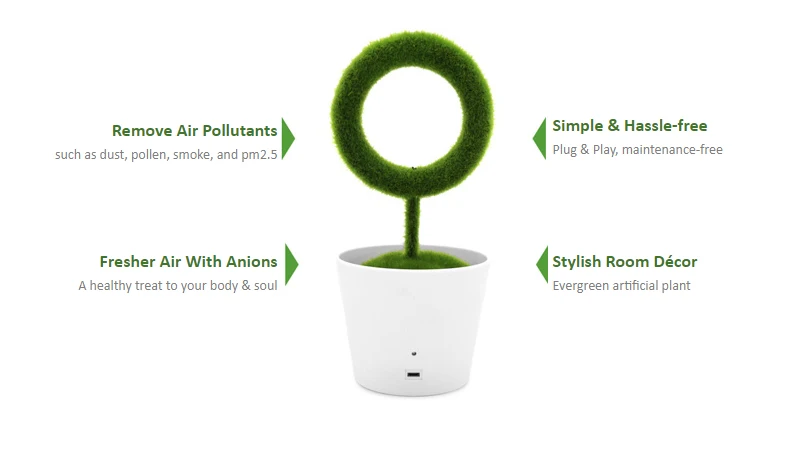
We say: Every little bit helps! And, frankly, it’s not surprising that some houseplants purify the air.
10 Indoor Plants That Clean the Air
Some of the best air-purifying houseplants are:
1. Spider Plants (Chlorophytum comosum) are powerful air purifiers which are able to remove formaldehyde, a gas that is emitted by cigarette smoke, dry cleaning, synthetic carpeting, fingernail polish, and more. Spider plants also remove carbon monoxide which you may find in rooms with fireplaces or has stoves. Fortunately, spider plants are very easy to grow and maintain. Just keep moist in a semi-sunny to shady spot and it will thrive.
Spider plants
2. Philodendrons, one of the most popular houseplants, are also excellent air purifiers and remove formaldehyde gases from the air. Plus, they are practically bullet-proof plants with quick-growing trailing vines and pretty heart-shaped leaves. They can take full sun to shade if watered regularly.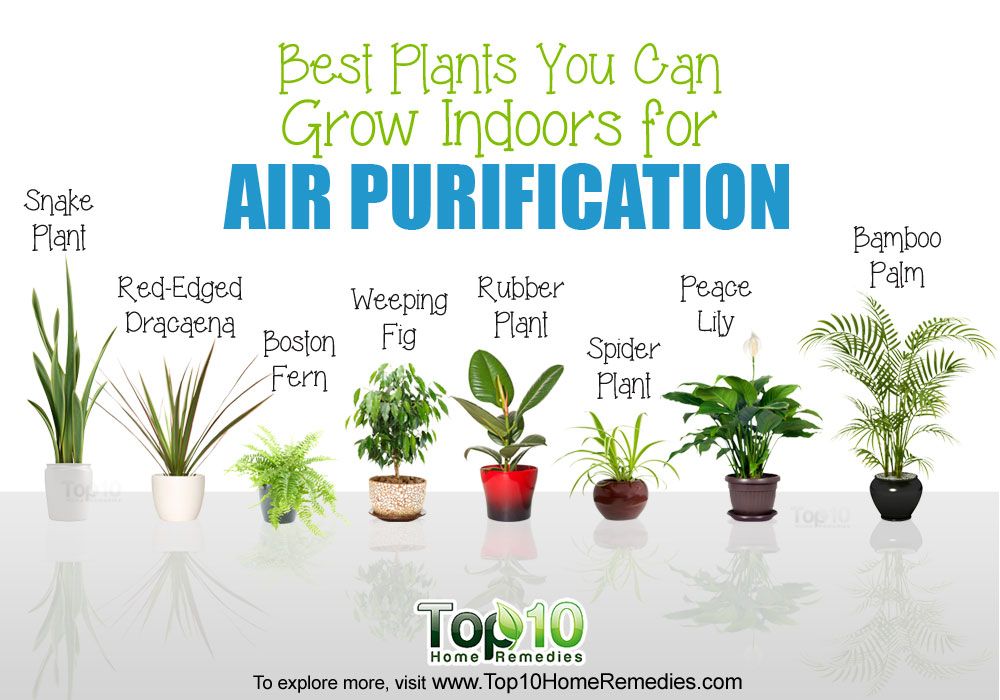 Heart-leaf, Philodendron selloum, and elephant ear philodendrons are the best air cleaners.
Heart-leaf, Philodendron selloum, and elephant ear philodendrons are the best air cleaners.
Philodendron
3. English Ivy (Hedera helix) is also a popular, hardy plant that is easy to grow. It removes most pollutants. It is not fussy about light and can survive sun to shade. Ivy doesn’t like high temperatures and prefers to stay cool. Keep moist and spray the leaves weekly to discourage spider mites.
English ivy
4. The Peace Lily (Spathiphyllum sp.) is a beautiful plant with a lovely white flower which thrives nicely in average indoor temperatures. Peace lilies are known to clean the air of alcohols, acetone, trichloroethylene, benzene, and formaldehyde. Keep moist in a semi-shady location.
Peace lily flower
5. Variegated Snake Plant (Sansevieria trivasciata), also called “Mother-in-Law’s Tongue,” is very easy to grow. Water heavily then let it dry out before watering again. It can survive any location from sun to shade.
Water heavily then let it dry out before watering again. It can survive any location from sun to shade.
Snake plant (this 35-year-old Mother-in-Law’s Tongue actually did come from a mother-in-law).
6. Bromeliads win a gold star for cleaning up most pollutants. They release oxygen and remove air pollutants at night while you sleep! These pretty plants with their bright flowers and green foliage do best with bright, indirect sunlight or fluorescent office lighting. This drought-tolerant plant doesn’t need much maintenance, but will get root rot if you over-water or don’t provide good drainage.
Bromeliad
7. Dracaena like to be kept moist in a semi-sunny to shady location. Warneck, Janet Craig, red-edged, and cornstalk dracaenas have been rated the highest in removing air pollutants.
8. Weeping fig (Ficus benjamina) likes bright indirect light, high humidity, and warm temperatures.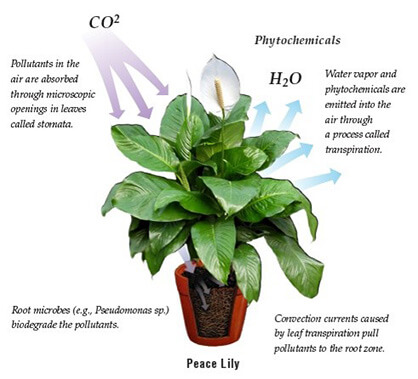 Water when top of soil feels dry and mist the top regularly.
Water when top of soil feels dry and mist the top regularly.
9. Rubber plants (Ficus elastica) tolerate dim light and cool temperatures and remove air toxins from any indoor environment.
10. Areca palms (Chrysalidocarpus lutescens) are beautiful, easy plants that remove all indoor air toxins.
More Plants That Clean the Air
- If you would rather have flowering plants, two that fared well in the testing were Chrysanthemums and Gerbera daisies. They are effective at removing VOCs and produced blossoms too!
- Chinese evergreens (Aglaonema) like warm temperatures and medium to low light conditions. Allow it to dry a bit between waterings. Keep out of drafts, which can cause the leaves to brown.
- Reed or Bamboo Palms thrive in low light as long as they are kept evenly moist.

- Other great air-purifying houseplants include Boston ferns, aloe vera, and bird of paradise.
No need to turn your home into a jungle, though: In a house with 8 to 9 foot high ceilings, only one or two plants per 100 square feet of floor space is beneficial. The roots and micro-organisms in the soil play as important a role as the leaves, so plants should be in 6- to 8-inch wide pots with the soil surface exposed to the air. Soaking up toxins seems to have no adverse effect on the plants studied. Research shows that they safely metabolize the compounds by breaking them down to harmless carbon, water, and salts.
We clean our homes of dirt, so why not clean the air—especially if it is as easy as adding a few more houseplants.
See our Houseplants Care Guide on how to keep your houseplants happy and healthy—so that that they can keep your air healthier, in turn!
Do indoor plants purify air?
(Image credit: Getty)House plants have become incredibly popular in recent years, but do indoor plants purify air? And to what extent?
Since the COVID-19 pandemic began, there's been a huge focus on the importance of indoor air quality since so many of us have spent increasing amounts of time inside.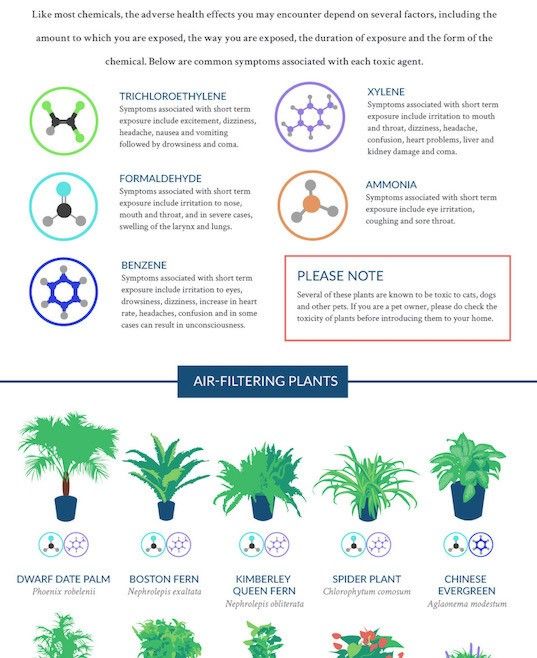
Further to this, the Environmental Protection Agency (EPA) reports that Americans spend up to 90% of their time indoors, where levels of pollutants can be up to five times higher than outside air. And that's one of the many reasons why it's essential to ensure the air we breathe indoors is as clean as possible. Yes, you could look at getting one of the best air purifiers, such as a Dyson air purifier, to improve your home's air quality, but even when discounted, they can be expensive.
So, while house plants are sometimes advertised as air purifying plants for your home, is there actually any truth in that? Here we look into the science behind indoor plants and their effect on air quality.
Related: What is the air quality index?
How do indoor plants purify air?
You might already know that air quality, in general, is affected by carbon dioxide, carbon monoxide, nitrous oxide, as well as volatile organic compounds (VOCs), which can exist in some of the products and materials inside our homes, according to the EPA .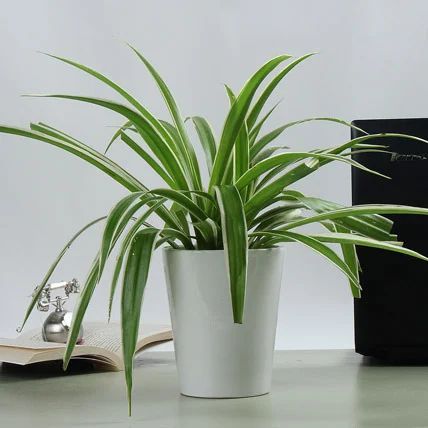
Through the process of photosynthesis, plants convert the carbon dioxide we exhale and also remove gases from the air through a process called absorption.
In an often-cited 1989 NASA report , scientist Bill Wolverton claimed that household plants could provide a "promising economical solution to indoor air pollution." Wolverton studied the ability of plants to remove VOCs from the environment and their potential for use in deep-space missions. However, more recent research has poured cold water on the idea.
Peace lilies are one of the more effective plants at removing VOCs (Image credit: Getty)Scientists studying the effectiveness of indoor plants for the passive removal of ozone, found houseplants make "at best, modest contributions of about 0.9–9% to indoor ozone removal effectiveness," they reported in 2017 in the journal Building and Environment . The tests, performed in a laboratory to simulate the effects on a typical U.S. home, found houseplants barely affected the environment. To make a meaningful difference to the air quality of your home, you'd need to fill a room from top to bottom with plants, they suggest.
To make a meaningful difference to the air quality of your home, you'd need to fill a room from top to bottom with plants, they suggest.
Related: How do air purifiers work?
While a single spider plant won't purify the air, a green wall covered in plants just might, found scientists in a study published in 2020 in the Journal of Environmental Management . The scientists concluded that a green wall filled with suitable plant species "can be used to create a horticulturally sustainable internal green wall, and improve the health index in the building interior environments."
So, in high enough quantities, plants can improve air quality. But what should we buy? Sadly, science doesn't have the answer (yet).
A 2018 paper published in Trends in Plant Science is confident that plants remove pollutants, but there is little research into which species are most effective. The paper concludes that "the capacity of plants to remove indoor air pollutants through stomatal uptake (absorption) and non-stomatal deposition (adsorption) remains largely unknown.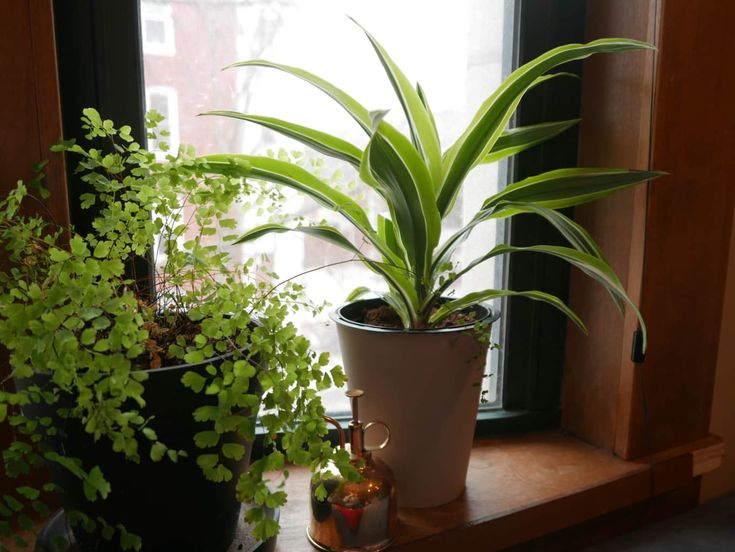 "
"
Which pollutants can indoor plants filter out?
The most common, harmful pollutants found indoors include trichloroethylene, formaldehyde, benzene, xylene and ammonia, according to the NASA study, Interior Landscape Plants for Indoor Air Pollution Abatement . Trichloroethylene can be found in paints and varnishes, formaldehyde in paper bags and synthetic fabrics and benzene in tobacco smoke and dyes. Xylene is released in car exhausts, while ammonia is found in window cleaners and floor waxes, according to NASA.
In high concentrations, these five pollutants can cause dizziness, headaches and irritation to nose, mouth and throat as well as liver and kidney damage. The results of NASA’s study showed two plants that work to reduce the levels of all five of these pollutants from indoors. These are peace lilies (Spatiphyllum ‘Mauna Loa’) and florist’s chrysanthemums (Chrysanthemum morifolium).
Spider plants have been shown to reduce levels of formaldehyde in a room (Image credit: Getty)Do indoor plants have other health effects?
During COVID-19 lockdowns, many of us decided to get our hands dirty and get into gardening – but was there any health benefit to this?
In a study published in May 2021 in the journal Environmental Research , scientists studied 323 students and found that houseplants were linked to feelings of "being away while at home" providing a staycation for the mind that improves mental health.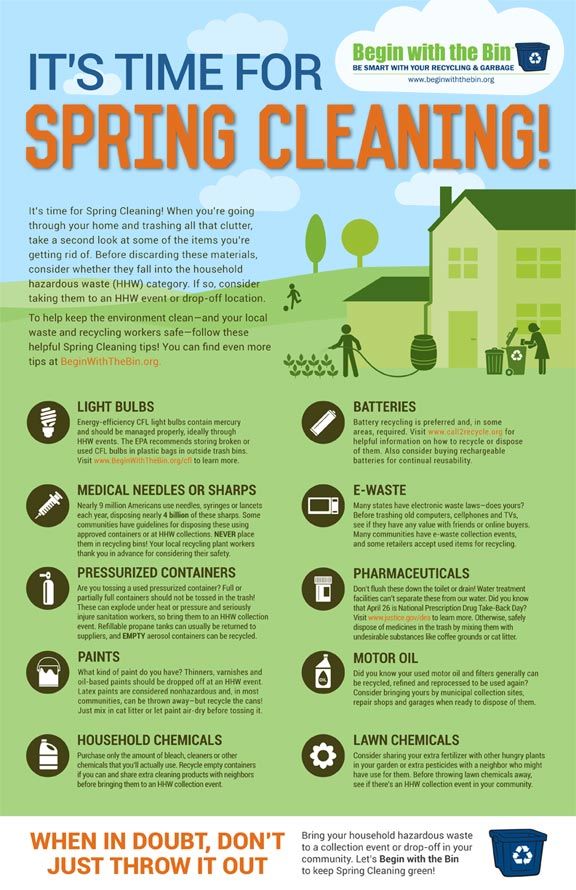
While the benefits of plants purifying the air is less certain, a recent study from Princeton University finds that gardening is beneficial for physical and mental health. While another study cited in the Journal Physiological Anthropology involving young adult males found that indoor gardening lowered stress responses compared to the demands of completing a computer task. When sitting in front of a computer and asked to complete a task, researchers identified an increase in blood pressure, heart rate, and stress that wasn't present when the same group was gardening.
(Image credit: Getty)Are indoor plants safe for pets?
Introducing more plants and greenery to the home can have benefits, but are indoor plants safe for pets?
Most people know that lilies are dangerous to cats and tomato plants to dogs, but many other species also threaten the health and wellbeing of our pets. There are too many to list here but there's a full list of poisonous plants available on the ASPCA's website .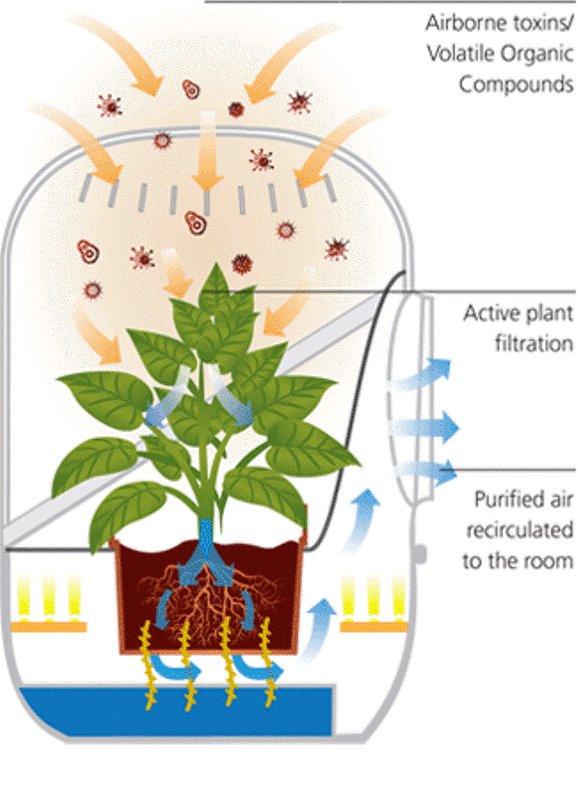
What happens if your pet does eat your plants? Alexander Campbell of the Veterinary Poisons Information Service (VPIS) said: "In many cases, animals remain asymptomatic or suffer little more than gastrointestinal upset. There are a few instances where more severe clinical effects have resulted."
One of the biggest challenges for vets is knowing what a pet has ingested, researchers caution . The simple solution? Remove any known contaminants from your home or garden. And, in case you're wondering, air purifiers are safe for pets, in the main.
While plants can make your home a more pleasant environment and taking care of them can have mental health benefits, it's unlikely they'll do much to purify the air — unless you're going to buy hundreds. So if you're concerned about air quality in your home, we advise you to invest in an air purifier, preferably one fitted with a high-quality HEPA filter.
Related: : Air purifier myths debunked
Additional resources
- Find out how NASA keep the space station’s air clean: Clearing the air in space
- Listen to a TED talk: How to grow fresh air
- Read a guide from the Environmental Protection Agency: Guide to Air Cleaners in the Home
Lawrie is a journalist and editor who writes about healthcare, science, technology, engineering and design. He's worked for some of the UK and Europe's leading titles, making complex science as simple as possible. He also owns content agency 42group where he helps household brands, academic institutions and charities to grow through engaging, informative and inspirational words.
He's worked for some of the UK and Europe's leading titles, making complex science as simple as possible. He also owns content agency 42group where he helps household brands, academic institutions and charities to grow through engaging, informative and inspirational words.
Top 9 indoor plants that perfectly clean the air
To remove dust from the air, you can buy an expensive air conditioner, to humidify it, you need to turn on the steam generator, pleasant smells will spread around the apartment if you spray the air freshener ... Or you can do without these expensive and far from always harmless devices and buy flowers. Many indoor plants, familiar from childhood and seemingly well known, it turns out, can not only decorate the interior, but also purify the air well.
1. Azalea, or rhododendron
Household chemicals depress not only microbes: alas, its fumes also have a bad effect on humans. To prevent the bathroom cleaner cabinet from being your enemy, put a pot of azalea on the shelf: it will absorb ammonia and formaldehyde (don't forget about good lighting).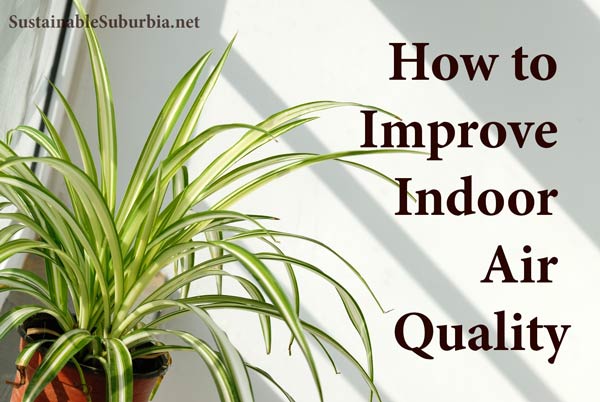 You can also place this flower in the kitchen, since various kinds of detergents and solutions have found a place there as well. In addition, the azalea repels bugs and ants, and, therefore, is able to protect products from them.
You can also place this flower in the kitchen, since various kinds of detergents and solutions have found a place there as well. In addition, the azalea repels bugs and ants, and, therefore, is able to protect products from them.
Azalea
2. Ivy (chedera)
In addition to the main result - pleasant feelings from the feeling of novelty - carried out at home, repairs can also have a side effect: indisposition from the fumes of paints, varnishes and other chemicals used for interior decoration. Moreover, the emission of gases harmful to health can continue for a long time after the applied coatings have dried. To reduce their unpleasant impact, it is advisable to arrange pots of ivy in the room. It absorbs formaldehyde, benzene, and carbon monoxide well (the latter quality makes ivy a very valuable plant in city apartments and helps clean the air from the street).
Ivy
In addition, if there is a cat in the house whose life takes place within four walls - again a classic example of urban housing - then the notorious cat litter box can become a source of allergies for the owners. Therefore, it is worth placing ivy next to it, which is a good trap for allergen microparticles. And an additional bonus will be the allocation of phytoncides to them, which is very useful in the "cold" periods of the year.
Therefore, it is worth placing ivy next to it, which is a good trap for allergen microparticles. And an additional bonus will be the allocation of phytoncides to them, which is very useful in the "cold" periods of the year.
3. Chlorophytum
Almighty advertising has convinced us that sterile cleanliness in the kitchen can only be obtained by using strong cleaning agents. However, she forgot to warn that some of their species emit formaldehyde, a potential carcinogen. So if the housewives are not yet ready to give up household chemicals, then they should place five or six pots of chlorophytum in the kitchen, which is able to absorb many toxic substances.
Chlorophytum
In addition, chlorophytum has pronounced antimicrobial properties - it is not for nothing that even astronauts on the ISS breed it, where maintaining cleanliness is much more critical than on earth. There is information that this plant is capable of reducing the number of microbes in the air by almost 10 times per day, which means that its presence in the house is a good help in the fight against viruses that enter the air after someone with a cold sneezes heartily .
4. Rubbery ficus
When buying furniture made of chipboard, do not forget to purchase and place ficus next to the new sofa or wardrobe. Firstly, it will capture from the air and retain such harmful substances as trichlorethylene and formaldehyde (lacquers and paints are “rich” in the first place, synthetic resins used in the production of chipboard are in the second). Secondly, its large leaves are good dust collectors, the main thing is not to forget to wipe them with a damp cloth from time to time. And, thirdly, the ficus actively releases oxygen, which means that it will be easier to breathe in the room.
Ficus
5. Aloe (agave)
Oh, how long ago you tried to throw away this annoying plant with fleshy thick leaves, planted with thorns along the edges! However, before taking the pot to the trash can and shaking the earth out of it, it would be useful to familiarize yourself with the beneficial properties of aloe. And there are many of them: suffice it to mention the ability to capture phenolic and benzene compounds, many of which are pleasant to smell and just as harmful to health. Noteworthy is its ability to fight germs that cause colds.
Noteworthy is its ability to fight germs that cause colds.
Aloe
It is best to put the agave pot on the window in the kitchen, because in bright light the plant is at its best. In addition, not only the volatile substances released by aloe are bactericidal, but also its juice: if, for example, you scratched your hand when opening canned food, it is quite capable of replacing brilliant green and disinfecting the cut site with high quality.
6. Dracaena
Like many indoor plants, dracaena has a double effect - firstly, it releases phytoncides that reduce microbial air pollution. In addition, it absorbs carcinogens: formaldehyde - an integral part of artificial resins that are part of finishing materials, trichlorethylene and xylene - types of solvent for paints and varnishes.
Dracaena
In addition, xylene can also be released from plastic, so a planter next to the TV would be a good place for dracaena at home, and in the office - a computer desk.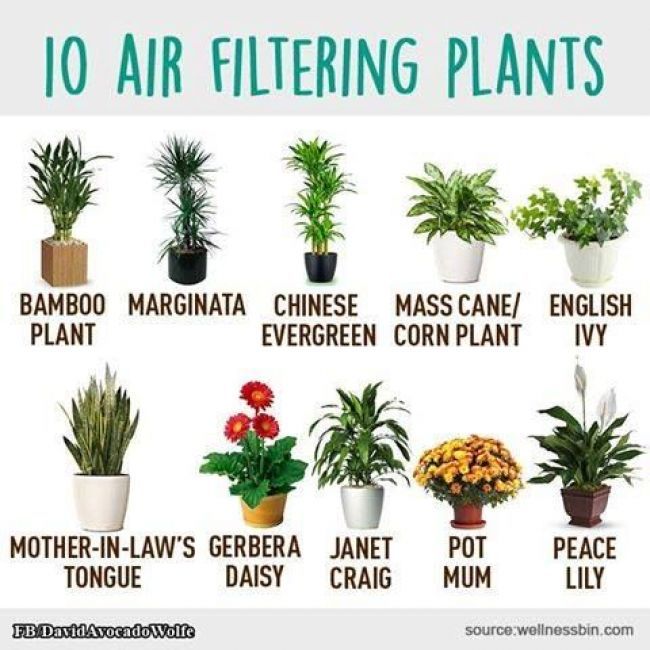
7. Golden epiprenum, or scindapsus
Formaldehydes, which have been mentioned more than once, can be emitted not only by paint and varnish products, but also by exhaust gases. In addition, car mufflers emit carbon monoxide, so if the garage is adjacent directly to the house (or there is a living room above it), epiprenum can be placed in rooms or corridors, which can absorb them well. However, this plant belongs to the vines, so it needs to be given "space for maneuver": it does not like cramped rooms.
Epiprenum
In addition, epiprenum purifies the air from the vapors of benzene compounds (toluene, xylene), which are emitted by many finishing materials, and well heals the house after repair. Another valuable quality of the plant is its active resistance to microbes, as well as fungi, so it prevents the spread of mold.
8. Chrysanthemum
This delicate flower is well known to florists and gardeners, but few people know that along with beauty it has good filtering and antibacterial properties. Meanwhile, the chrysanthemum well cleans the air of benzene - a constant component of paints, plastics and solvents, absorbs ammonia.
Meanwhile, the chrysanthemum well cleans the air of benzene - a constant component of paints, plastics and solvents, absorbs ammonia.
In addition, the owners of a house where indoor chrysanthemums grow are much less at risk of catching a cold: the plant releases phytoncides, which means that there is no place for pathogenic microbes next to it.
Chrysanthemum
9. Dieffenbachia
An apartment in the center of a metropolis or a workroom in an office center with parking for several hundred cars next to it is not the healthiest place to live or work. However, it is possible to reduce the harmful effects of gas pollution, to reduce the percentage of aromatic substances of the benzene series (toluene, benzene, xylene) in the air, if you put a pot of dieffenbachia somewhere in the corner or on a special table.
Dieffenbachia
In addition to the filtering effect, dieffenbachia will help protect against seasonal colds.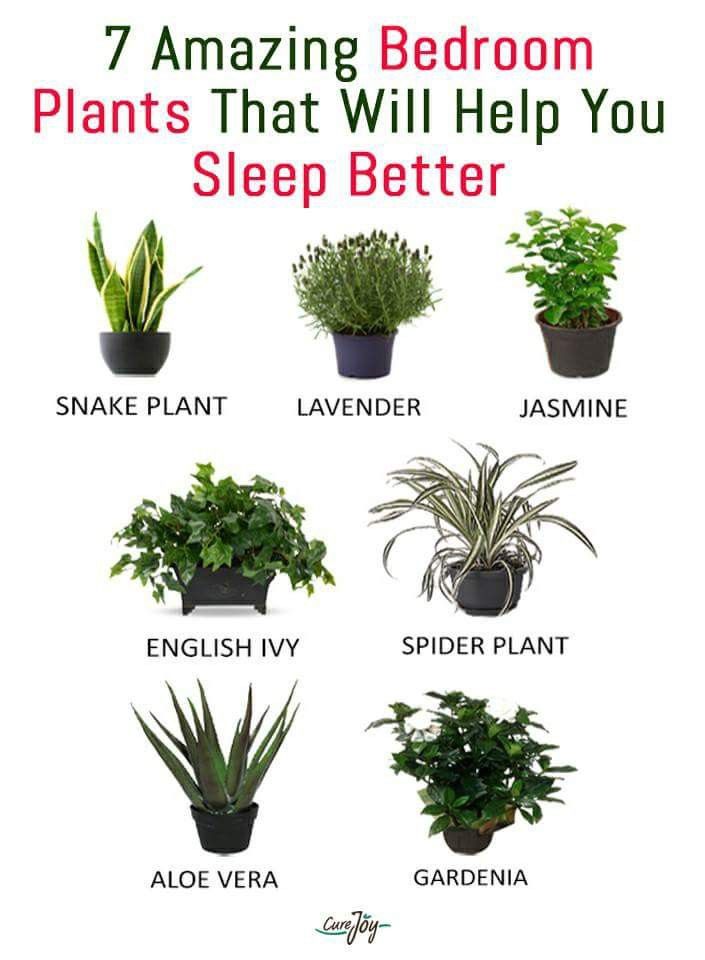 The fact is that the substances secreted by it cope well with staphylococci - the main cause of influenza, tonsillitis and similar dubious “joys of life”. Flowers for Woman8 Top
The fact is that the substances secreted by it cope well with staphylococci - the main cause of influenza, tonsillitis and similar dubious “joys of life”. Flowers for Woman8 Top
11/11/2019
1 star 2 stars 3 stars 4 stars 5 stars
To keep the air clean, place pots with chlorophytum, ficus, spathiphyllum and other plants from our selection in the house.
Alvhem
Frequent colds are not always associated with a weakened immune system. Sometimes they are provoked by harmful impurities that we inhale with the air. On the street, it is impossible to avoid this, but you are quite capable of cleaning your house. If you do not want to buy special air purifiers, you just need to put one of these sanitation plants in your house.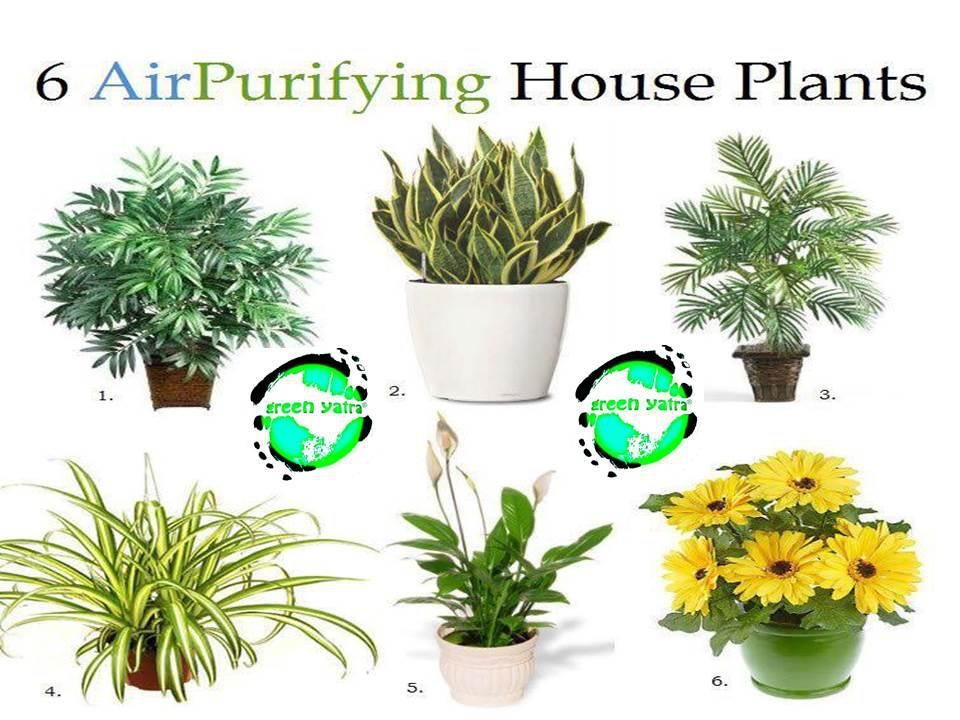
Watch a short video where we listed plants that purify the air
Or read the detailed article.
1 Chrysanthemum
Unsplash
Chrysanthemum is a frequent guest even in NASA ratings. They not only recommend using the plant in apartments, but they themselves set an example: these flowers are on the windowsills in the company's office. Chrysanthemums clean the air from the vapors of ammonia, benzene and formaldehyde. Do you live in a country house? Arrange a flower bed under your windows and breathe freely.
2 Chlorophytum
Unsplash
Chlorophytum is loved not only for its unpretentiousness, but also for its useful qualities: it removes harmful impurities from the air that appear after spraying household chemicals during cleaning. To settle this plant at home, it is not even necessary to go to the store for it, it is so popular that your neighbors probably have it.
3 Dracaena
Instagram @rastenie_store
Instagram @rastenie_store
Benzene, trichlorethylene, xylenes - you do not need to get acquainted with the dangers of these substances if you have a dracaena bush in your house. She cleans these poisons from the air. If you are just going to buy this houseplant, be careful - it is dangerous for pets. If you have a cat or dog, you should refuse to buy or place the potty in a hard-to-reach place.
4 Ficus
Unsplash
Ficus is the most popular, if not banal plant for the home. Only violet can compete with him. But the ficus has an undeniable advantage - it is responsible for the hygiene of the microclimate. It can be kept not only in the room, but also in the backyard. Ficus comes in different sizes. Do you want to always have a neat little bush, and not a one and a half meter tree? Just do not transplant the plant into a large pot.
5 Spathiphyllum
Unsplash
Another extremely unpretentious plant for the home. It even almost does not need to be watered - set it and forget it. Meanwhile, spathiphyllum removes such dangerous impurities from the air as ammonia, benzene vapor, formaldehyde and trichlorethylene.
6 Nephrolepis fern
Unsplash
Fern removes xylenes from the air. The plant loves moisture and shade. The ideal place in the apartment for him would be a bathroom. By the way, indoor flowers in the bathroom are now very popular. Having settled a fern in the bathroom, you will kill two birds with one stone: improve the microclimate and update the interior.
7 Sansevieria
Pixabay
A plant for the specific shape of the leaves, from which it received an alternative name - "mother-in-law's tongue.

